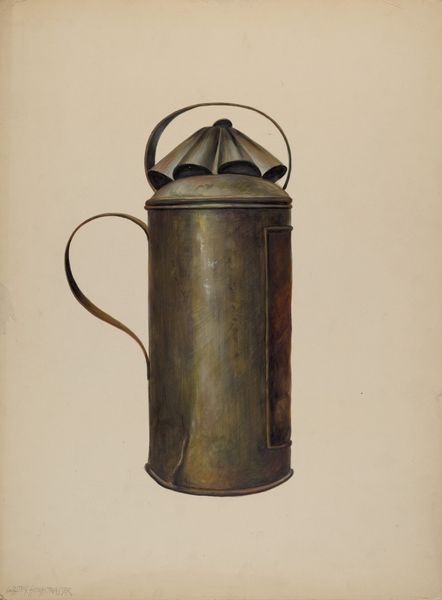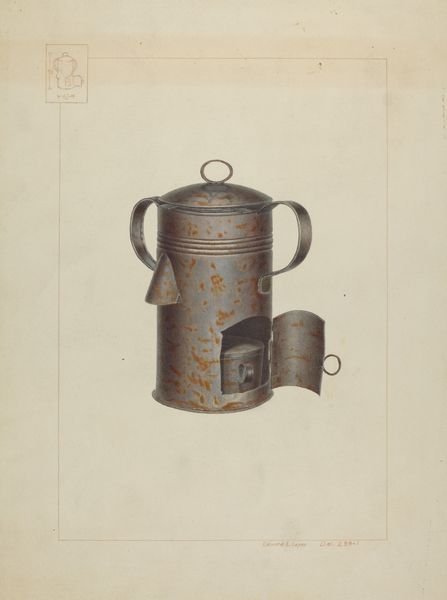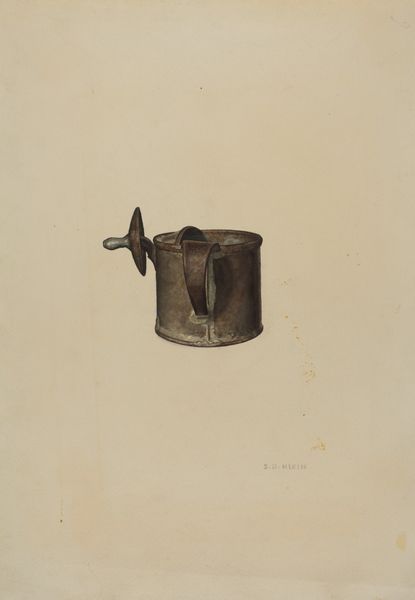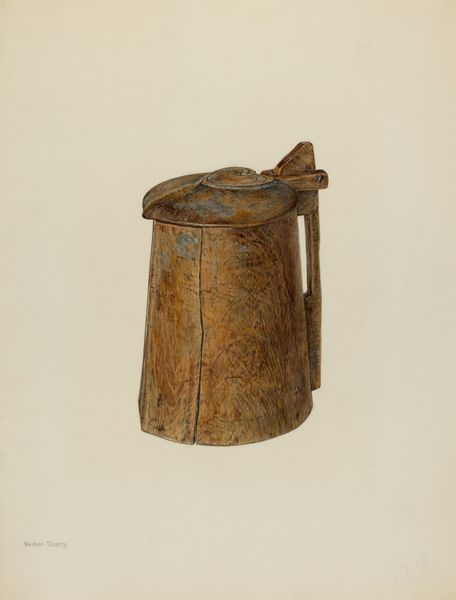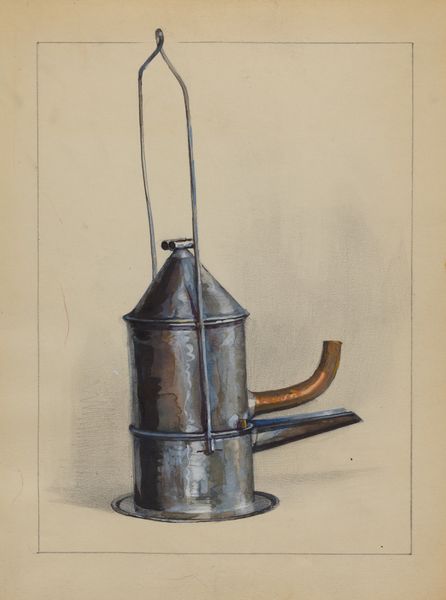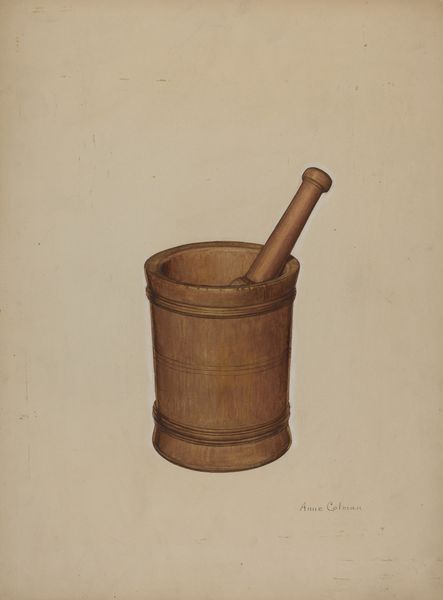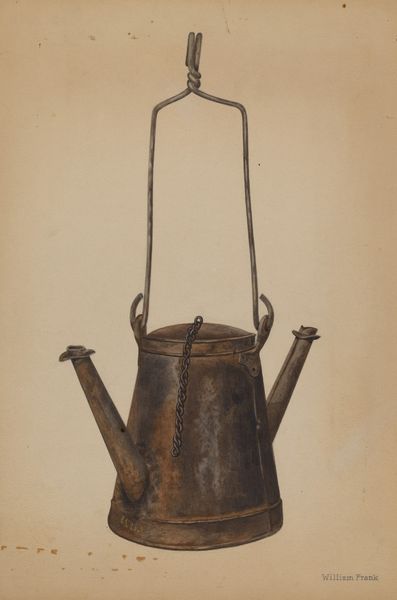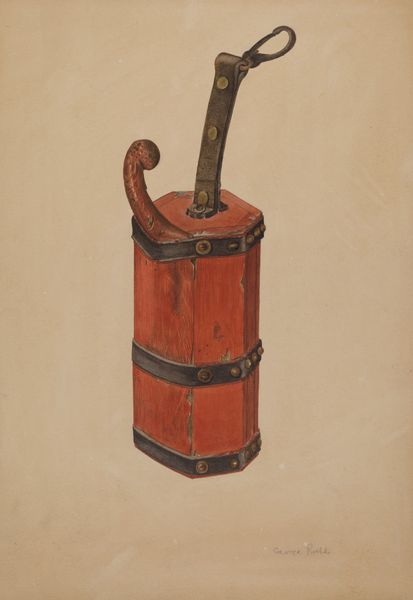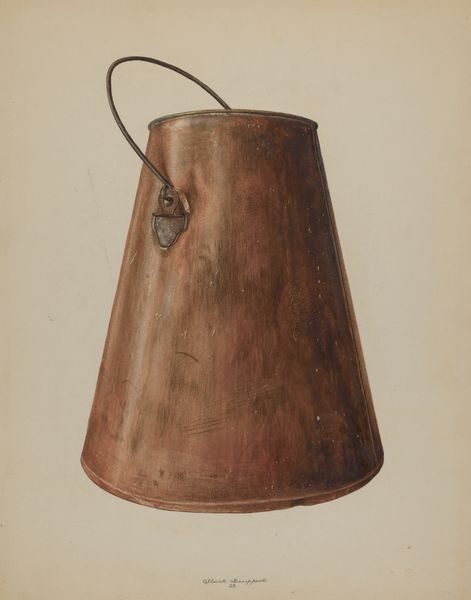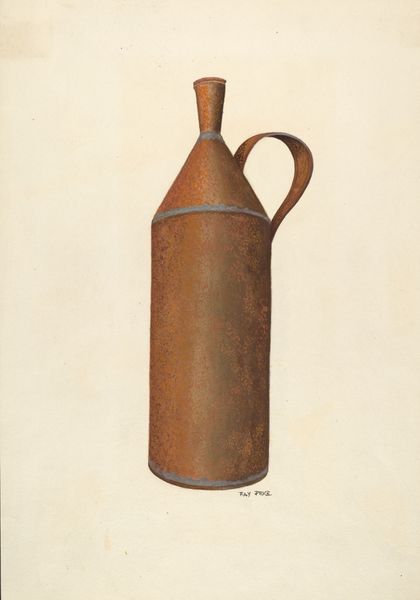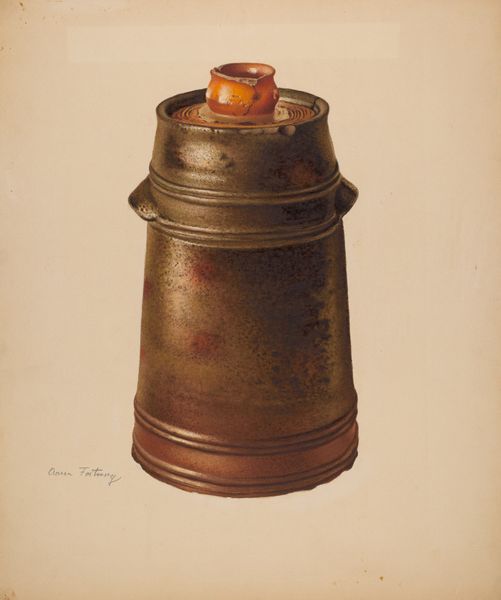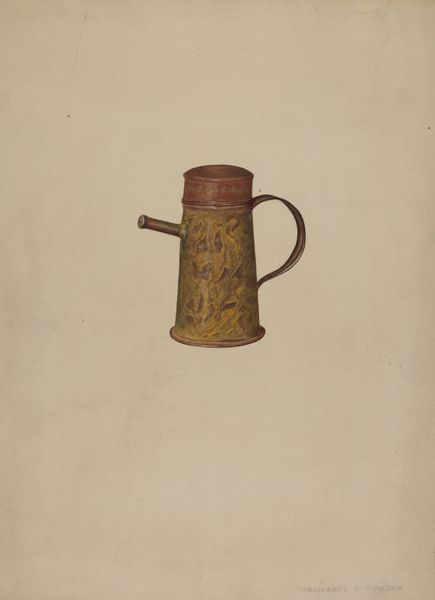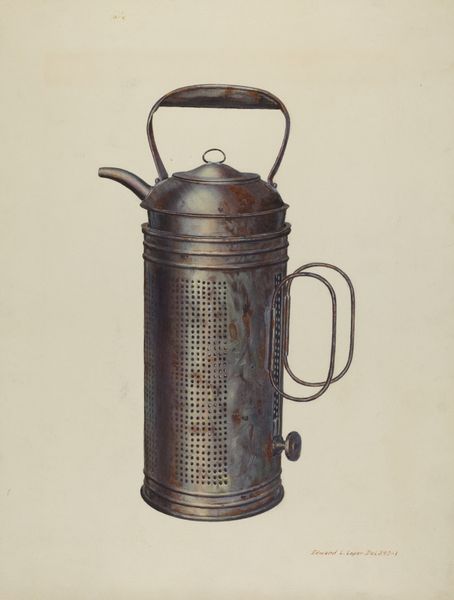
drawing, watercolor
#
drawing
#
charcoal drawing
#
watercolor
#
watercolour illustration
#
modernism
#
watercolor
Dimensions: overall: 23 x 32.8 cm (9 1/16 x 12 15/16 in.)
Copyright: National Gallery of Art: CC0 1.0
Editor: This is Hans Mangelsdorf's "Lamp," created around 1938 using watercolor and charcoal. There's something about the simplicity of the form and the muted tones that I find really appealing. What visual elements stand out to you in this work? Curator: Note the careful construction of forms. Observe the cylinder which serves as the central volume. Then the interplay between horizontal and vertical elements, aren’t you struck by how meticulously each section fits together in terms of shape? Consider how the artist explores depth and dimension through shading, creating a semiotic dialogue through visual representation. Editor: Yes, the shading definitely gives it a 3-D effect. Is there any significance to how Mangelsdorf chose to depict this everyday object? Curator: Consider this question instead: what impact does the use of watercolor, with its translucent qualities, have on your perception of the object’s texture and form? Does it, in your eyes, soften the edges and make it approachable despite its mechanical nature? The inherent semiotics present us with further insights into how this work evokes a relationship between objectivity and the viewer's interpretative consciousness. Editor: That’s a great point! It does soften it somehow. I was so focused on it just being a lamp. Curator: Exactly. By choosing watercolor and charcoal, he transforms a functional object into a study of form and light. Through line, shadow, tone, color, contrast, and texture, he encourages us to focus on form. The choice and execution is intentional; he guides us away from a reading steeped in any historical context toward that objective. What have you learned about how technique choices influences our understanding of an artwork’s function, in reality versus perception? Editor: Seeing it as a formal composition rather than just an illustration has totally changed my perspective. I see what you mean about form!
Comments
No comments
Be the first to comment and join the conversation on the ultimate creative platform.
